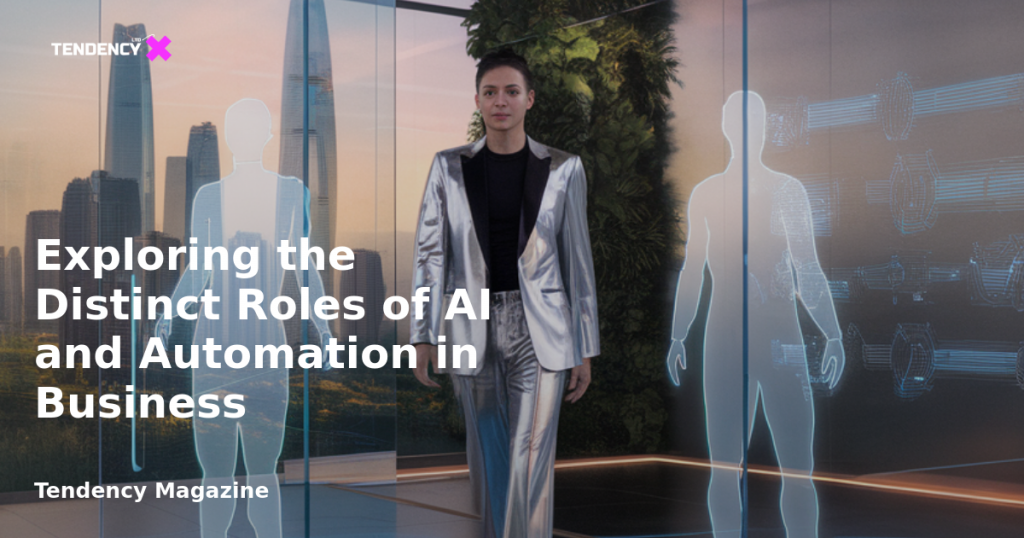Exploring the Distinct Roles of AI and Automation in Business

Table of Contents
- Understanding Automation
- Exploring Artificial Intelligence
- Comparing Automation and AI
- The Synergy of AI and Automation
- Frequently Asked Questions
Understanding Automation
Automation involves using technology to perform tasks without human intervention. Imagine a programmable coffee machine that brews your morning coffee at a set time, executing each step—from boiling water to brewing—automatically. Automation has been part of human innovation for centuries, from ancient water mills to the assembly lines of the Industrial Revolution. By minimizing the need for human involvement in routine tasks, automation allows people to focus on more complex and creative work.
Modern technology has expanded automation’s capabilities, enabling it to handle digital tasks through both hardware and software. A prevalent form of this is robotic process automation (RPA), where software robots perform repetitive tasks that once required manual input. For instance, RPA can extract data from emails and populate forms, freeing human workers from monotonous chores.
In the realm of e-commerce, automation is extensively utilized. Online store owners often employ automation tools for inventory management, social media scheduling, and demand forecasting, streamlining supply chain management. By ensuring business processes run smoothly, automation allows entrepreneurs to concentrate on higher-value activities.
Exploring Artificial Intelligence
Artificial intelligence (AI) encompasses technologies that mimic human intelligence. AI systems analyze vast datasets to identify patterns, draw conclusions, and generate insights. As datasets grow, AI learns and adapts, solving problems and self-correcting without explicit programming or human input.
AI technologies include machine learning, where systems learn from data, and deep learning, which uses neural networks to process information similarly to the human brain. A common example of AI in action is chatbots powered by large language models (LLMs), which understand natural language and engage in conversation.
AI excels in recognizing images and predicting trends, tasks traditionally performed by humans. These capabilities offer numerous benefits to businesses, enabling data-driven decision-making, personalized recommendations, fraud detection, and more. Despite its impressive capabilities, today’s AI is considered “narrow AI” or “weak AI,” designed for specific tasks. “Strong AI” or “artificial general intelligence,” which would think abstractly and adapt to new situations, remains theoretical and distant.
Comparing Automation and AI
Purpose
Automation focuses on executing tasks consistently and reliably, following predefined rules. It’s ideal for repetitive processes, such as tallying totals in accounting. In contrast, AI’s purpose extends to learning, predicting, problem-solving, and decision-making, mimicking human cognition. While automation reconciles accounts, AI can analyze data to identify trends and forecast future revenue.
Adaptability
Automation is consistent but inflexible, executing tasks without deviation. It follows set rules, like a coffee machine that brews coffee regardless of whether grounds are present. AI, however, is dynamic and context-aware, adapting its responses based on new data. An AI-powered coffee machine could adjust brewing parameters for the perfect cup, considering factors like grind size and density.
Technology
Automation can exist without computers, as seen in historical mechanical processes like the Gutenberg printing press. However, AI requires computational power and extensive data to function. While automation spans both mechanical and digital realms, AI is inherently tied to computation and data-driven analysis.
Learning
AI’s core function is learning and self-improvement. It generates and collects data, learning from it over time. In contrast, traditional automated systems require manual updates for improvement. Consider an automated spell-checker versus AI-powered autocorrect: while the former requires manual additions for new slang, the latter learns from usage patterns and adapts accordingly.
The Synergy of AI and Automation
The intersection of AI and automation creates intelligent automation, a self-improving combination of AI technologies and digital automation like RPA. Intelligent automation not only performs repetitive tasks but also gathers data, analyzes it, and makes independent decisions, adapting without human intervention.
For example, a program that sends email surveys to customers is automation. If it analyzes survey results to identify patterns and predict risks, it becomes intelligent automation. Chatbots also exemplify this synergy, using AI to handle complex queries beyond the capabilities of simple automation.
Frequently Asked Questions
What is the difference between AI and automation?
The primary difference lies in their capabilities: automation performs routine tasks based on defined rules, while AI incorporates decision-making, adapting dynamically to new data. Both enhance efficiency and reduce errors, but AI offers a more adaptable approach.
Can automation be done without AI?
Yes, automation can function without AI, relying on static rules to complete tasks. However, it lacks the adaptability and decision-making capabilities that AI provides.
Conclusion
AI and automation are transformative forces in modern business, each playing distinct yet complementary roles. Automation excels in executing repetitive tasks reliably, freeing humans for more complex endeavors. AI, with its ability to learn and adapt, offers dynamic decision-making and insights. Together, they create intelligent automation, a powerful combination that enhances efficiency and drives innovation. As these technologies continue to evolve, businesses that harness their potential stand to gain a competitive edge in an increasingly digital world.
2025 Tendency LTD. All rights reserved.

